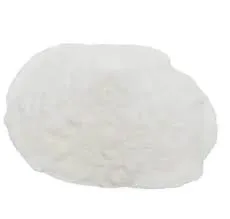
Nov . 05, 2024 03:47 Back to list
how to dissolve hydroxyethyl cellulose
How to Dissolve Hydroxyethyl Cellulose
Hydroxyethyl cellulose (HEC) is a non-ionic, water-soluble polymer derived from cellulose, commonly used in various industries, including pharmaceuticals, cosmetics, and construction. Its unique properties, such as thickening, binding, and film-forming capabilities, make it an essential ingredient in many formulations. However, to harness these properties effectively, understanding how to dissolve HEC correctly is crucial. This article will provide detailed instructions and tips on how to dissolve hydroxyethyl cellulose effectively.
Understanding Hydroxyethyl Cellulose
Before diving into the dissolution process, it’s essential to understand what hydroxyethyl cellulose is and why its solubility is significant. HEC is typically available in a powdered form and is primarily used as a thickener or stabilizer due to its ability to increase the viscosity of aqueous solutions. HEC does not gel upon cooling, making it ideal for various applications where a stable liquid is required.
Preparation for Dissolution
Materials Needed 1. Hydroxyethyl cellulose powder 2. Cold or warm water (depending on the application) 3. Mixing equipment (whisk, blender, or mechanical stirrer) 4. Heat source (if needed)
Safety Precautions While HEC is generally considered safe, it’s always advisable to wear gloves and a mask when handling any fine powders to prevent inhalation or skin irritation. Working in a well-ventilated area is also recommended.
Steps to Dissolve Hydroxyethyl Cellulose
1. Measure the HEC Depending on your specific formulation, measure the appropriate amount of hydroxyethyl cellulose. A typical concentration ranges between 0.5% to 5%, depending on the desired viscosity.
how to dissolve hydroxyethyl cellulose

2. Choose the Right Temperature - Cold Water Method For most applications, using cold or room-temperature water is effective. Pour the measured water into a suitable mixing container. - Warm Water Method If you’re aiming for faster dissolution or working with higher concentrations, warm water (around 60°C or 140°F) can accelerate the process. Be cautious as too high a temperature may cause the polymer to degrade.
3. Sprinkle HEC into Water Gradually sprinkle the hydroxyethyl cellulose powder into the water while continuously stirring. It is crucial to avoid dumping the powder in all at once, as this can lead to clumping and uneven dispersion.
4. Mixing Use a whisk, hand mixer, or mechanical stirrer to mix thoroughly. Aim for a uniform consistency, ensuring there are no lumps. If using a mechanical stirrer, a low speed is recommended initially, increasing gradually.
5. Let it Hydrate After an initial mixing, let the mixture sit for 10 to 30 minutes. During this time, the HEC will hydrate, which enhances its ability to dissolve completely and thickens the solution further.
6. Final Mixing After the hydration period, give the mixture a final stir or blend to ensure an even, smooth consistency. If the solution is too thick, you can add more water to reach the desired viscosity.
Tips for Successful Dissolution
- Gradual Addition Always add HEC gradually to avoid clumping. Creating a vortex in the water can also help disperse the powder more evenly. - Adjust Viscosity If after mixing, the viscosity doesn’t meet your needs, you can adjust the concentration of HEC, or alter the water temperature slightly. - Use of Additives Sometimes incorporating additives (like surfactants) can aid in the dissolution process, especially if you are dealing with formulations that have other thickeners or agents.
Conclusion
Dissolving hydroxyethyl cellulose is straightforward when following the right procedures. By measuring accurately, choosing the appropriate temperature, and mixing thoroughly, formulators can create stable and effective solutions for various products. Understanding the properties and behaviors of HEC during the dissolution process will enhance its application in your formulations, ensuring quality results every time.
-
Versatile Hpmc Uses in Different Industries
NewsJun.19,2025
-
Redispersible Powder's Role in Enhancing Durability of Construction Products
NewsJun.19,2025
-
Hydroxyethyl Cellulose Applications Driving Green Industrial Processes
NewsJun.19,2025
-
Exploring Different Redispersible Polymer Powder
NewsJun.19,2025
-
Choosing the Right Mortar Bonding Agent
NewsJun.19,2025
-
Applications and Significance of China Hpmc in Modern Industries
NewsJun.19,2025







